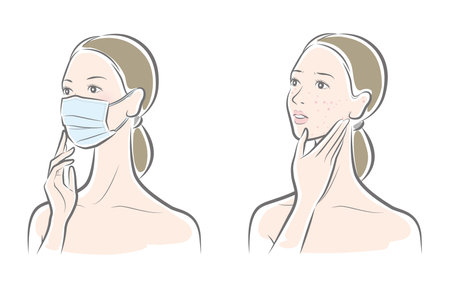Understanding Men’s Hair Loss in the UK
When it comes to men’s hair loss, Britain brings its own distinct cultural perspective. For generations, a full head of hair has been associated with youth, vitality, and even social standing in British society. Yet, hair loss is incredibly common—affecting nearly two-thirds of British men by the age of 35. In the UK, the stiff-upper-lip mentality means that many men might brush off their concerns or shy away from openly discussing thinning hair, despite how deeply it can affect confidence and self-image.
Common Causes of Hair Loss Among British Men
Genetics play the most significant role in male pattern baldness here in the UK, with androgenetic alopecia being the leading culprit. But that’s not all—lifestyle factors unique to life in Britain can contribute as well. Stressful work environments, lack of vitamin D due to limited sunlight (especially during those long winter months), and modern diet trends have all been linked to increased shedding and weakened follicles.
Cultural Attitudes: More Than Just Vanity
In Britain, hair loss is not simply seen as an aesthetic issue; it often carries emotional weight. From awkward banter at the pub to subtle pressures within professional settings, men sometimes feel compelled to downplay their anxiety over receding hairlines. However, there’s a growing movement towards embracing open conversations about male grooming and self-care. This shift is encouraging more British men to seek out advanced solutions like PRP and mesotherapy—not just for appearance’s sake but for a renewed sense of self-assurance.
The Unique Impact on British Lifestyles
Losing one’s hair in the UK isn’t just about changing looks—it can influence everything from dating confidence to job interviews. With rainy weather demanding frequent hat-wearing and unpredictable social situations calling for adaptability, British men are increasingly interested in practical, science-backed treatments that fit seamlessly into their daily routines. As we explore PRP and mesotherapy in this guide, it’s important to recognise how these solutions can be tailored to meet the needs and expectations of men living right here in Britain.
2. Navigating Hair Loss Solutions: What Brits Are Choosing
As a man living in the UK, I’ve personally felt the quiet pressure of hair thinning and receding hairlines that so many of us experience. It’s a topic most blokes avoid at the pub, but behind closed doors, we’re all searching for trusted ways to regain our confidence. The good news is that modern Britain offers an impressive array of hair loss solutions, both traditional and cutting-edge. Whether you’re just noticing the first signs or have been battling hair loss for years, knowing what’s available—and what’s actually popular among British men—can make all the difference.
Modern Treatments on Offer
From my own research and conversations with mates, it’s clear that options range from over-the-counter products to medical-grade procedures. Here’s a snapshot of what’s trending across the UK:
| Treatment | Description | Popularity Among Brits |
|---|---|---|
| Minoxidil (Regaine) | A topical solution applied directly to the scalp to stimulate hair growth. | Widely used; many start here due to easy access and proven results. |
| Finasteride (Propecia) | An oral prescription tablet that reduces DHT levels, slowing hair loss. | Popular with those willing to seek GP advice; praised for effectiveness but debated for side effects. |
| Hair Transplant Surgery | Surgical procedure moving follicles from one part of the scalp to another. | Increasingly common as stigma fades; seen as a long-term investment. |
| PRP Therapy | Platelet-rich plasma injections using your own blood to encourage growth. | Gaining traction in clinics across London and Manchester; valued for being minimally invasive. |
| Mesotherapy | Tiny injections of vitamins, minerals, and amino acids into the scalp. | A rising star; especially among men looking for natural, tailored treatments. |
| Lifestyle & Supplements | Nutritional changes and supplements aimed at supporting hair health. | A steady choice for those keen on holistic wellbeing. |
The British Approach: Discreet Yet Decisive
There’s something distinctly British about quietly researching your options before making a move. From my experience, most men here value subtlety—opting for treatments that deliver visible results without drawing attention. PRP and mesotherapy are especially appealing because they offer a discreet approach compared to more drastic measures like transplants. Trust also plays a big role: recommendations from GPs, reviews on UK-based forums like Bald Truth Talk, and word-of-mouth from mates are often what tip the balance when deciding which solution to pursue.

3. Demystifying PRP Therapy: The Science and the Experience
Platelet-Rich Plasma (PRP) therapy has quickly become a buzzword among men exploring hair loss solutions in the UK, but what exactly does it involve? At its core, PRP harnesses your body’s own natural healing powers to stimulate hair growth. The process begins with a simple blood draw—remarkably straightforward, almost like popping into your local GP for a routine check-up. The collected blood is then spun in a centrifuge to separate out the plasma rich in platelets, which are brimming with growth factors. This golden serum is carefully injected into targeted areas of your scalp where thinning or receding is most evident.
For those curious about what to expect during the procedure, rest assured—it’s less intimidating than it sounds. Most clinics across London, Manchester, and Edinburgh offer numbing creams to keep discomfort to a minimum. The actual injection process takes around 30-45 minutes, making it an easy lunch break option for busy city dwellers. Afterward, you might notice some mild redness or tenderness, but these effects generally subside within a day or two.
The real beauty of PRP comes from its natural approach; because it uses your own plasma, there’s virtually no risk of allergic reactions. British men who’ve undergone PRP often share stories of renewed confidence and subtle but noticeable improvements in hair density after just a few sessions. In classic UK fashion, many appreciate the understated results—nothing too dramatic, just a gradual thickening that feels authentically their own. If you’re on the fence about taking the plunge, it’s worth seeking out reviews from local clinics or having a candid chat with someone who’s tried PRP first-hand; personal experiences across the UK tend to highlight both the science and the uniquely reassuring experience of this innovative treatment.
4. Mesotherapy for Hair: The British Perspective
If you’ve ever found yourself scanning the mirror in a London flat or chatting about receding hairlines with mates at your local pub, you’ll know that hair thinning is a common concern across the UK. Enter mesotherapy—a treatment gaining real momentum among British men looking for non-surgical solutions to hair loss. But what exactly is it, and why are more clinics from Edinburgh to Brighton offering this as a go-to option?
What Is Mesotherapy and How Does It Work?
Mesotherapy involves micro-injections of a cocktail of vitamins, minerals, amino acids, and sometimes medications directly into the scalp. These nutrients target the hair follicles, aiming to stimulate growth, improve blood circulation, and strengthen existing hair. In British clinics, the process is typically carried out by experienced practitioners who tailor the blend to suit your unique needs—a nod to our love of bespoke services.
The Benefits of Mesotherapy for Hair Loss
Many British men appreciate mesotherapy for its minimally invasive nature. There’s no downtime—no awkward hats on the Tube or hiding away from work Zoom calls. Most clients can return to their daily routine almost immediately, making it perfect for busy city life. Plus, it’s suitable for various stages of hair thinning, whether you’re just noticing your first signs or looking to boost density after years of gradual loss.
Typical British Experiences: Real Stories from UK Clinics
The appeal of mesotherapy in the UK isn’t just clinical—it’s personal. At my own local clinic in Manchester, I chatted with gents who shared their journeys:
| Client Profile | Reason for Choosing Mesotherapy | Reported Benefits |
|---|---|---|
| Tony, 42, Brighton | Early thinning at temples | Noticed thicker texture and improved confidence after 3 sessions |
| Liam, 35, London | Sought natural results without surgery | Minimal discomfort and maintained natural look |
| Owen, 50, Glasgow | Post-stress hair shedding | Less shedding and healthier scalp appearance |
The Growing Appeal in UK Clinics
The rise in demand for mesotherapy across British clinics reflects our culture’s pragmatic approach: we want effective solutions that fit seamlessly into our lives. Whether you’re living in bustling London or a quieter corner of the countryside, the accessibility of qualified practitioners has made mesotherapy an increasingly mainstream choice. With its customisable approach and visible results reported by many blokes up and down the country, it’s no wonder more men are considering this treatment as part of their personal care routine.
5. Comparing PRP and Mesotherapy: Which Suits Your Lifestyle?
When it comes to tackling hair loss in the UK, both PRP (Platelet-Rich Plasma) and mesotherapy have become buzzwords among men seeking effective solutions. But how do they really stack up against each other? Let’s break down their differences by looking at effectiveness, downtime, cost, and how well they slot into different lifestyles—whether you’re a busy London professional or living a more relaxed life in the countryside.
Effectiveness: Real Results or Just Hype?
PRP is often praised for its science-backed approach, using your own blood’s growth factors to encourage hair regrowth. Many British men notice visible improvements after three to six sessions, particularly when dealing with early-stage thinning. Mesotherapy, on the other hand, delivers a cocktail of vitamins and nutrients directly into the scalp. While some find this method boosts hair quality and slows shedding, results can be subtler and may require ongoing treatments for maintenance. In my experience—and from talking with mates who’ve tried both—PRP tends to edge ahead if you’re chasing noticeable density and thickness.
Downtime: Fitting Treatments into Busy UK Life
If you’re juggling work, family, and social commitments, minimal downtime is key. PRP treatments usually involve some redness or mild swelling that settles within a day or two—easy enough to disguise under a cap or with a strategic hairstyle if you’re heading out in Manchester or Edinburgh. Mesotherapy is even more discreet, with most blokes able to return to normal activities almost immediately. For those constantly on the go or working in client-facing roles, mesotherapy might offer the least disruption.
Cost: What’s the Investment?
The price tag is always part of the conversation here in the UK. PRP generally sits at the higher end—think £300-£600 per session at reputable clinics in cities like London or Birmingham. Most courses recommend 3-6 sessions initially. Mesotherapy is slightly gentler on your wallet, with sessions averaging £150-£350 each but requiring more frequent visits to maintain results. Over time, costs can even out depending on your long-term commitment and expectations.
Lifestyle Fit: Urban Professionals vs Laid-back Lifestyles
Your lifestyle plays a big part in choosing between these two treatments. City dwellers with demanding jobs might appreciate mesotherapy’s quick appointments and near-zero downtime. If you value privacy and are keen on fewer clinic visits—even if it means a bit more initial recovery—PRP could fit better into your routine. For those enjoying a slower pace outside urban centres, either treatment is manageable; it simply depends on how much time (and patience) you have for repeat appointments versus waiting for results.
Ultimately, both PRP and mesotherapy offer unique benefits for men’s hair loss across the UK. By weighing up effectiveness, downtime, cost, and lifestyle fit—as I have myself—you’ll be better equipped to choose the treatment that feels right for you and your everyday life.
6. What to Expect: Results, Recovery, and Aftercare
Choosing PRP or mesotherapy as a hair loss solution in the UK is an exciting step, but it’s essential to set realistic expectations from the outset. While both treatments are backed by promising clinical results, it’s important to remember that outcomes can vary based on your unique hair type, pattern of thinning, and overall health. Here’s what you need to know about results, recovery, and aftercare—grounded in real-world experience and best practices recommended by UK clinicians.
Understanding Your Results Timeline
After undergoing PRP or mesotherapy, most men begin to notice subtle improvements within three to six months. Hair might feel thicker at the roots, with less visible shedding. However, don’t expect instant miracles—these therapies work gradually as they stimulate natural hair regrowth cycles. In my own journey, patience was key; regular sessions and consistent aftercare made all the difference. Typically, a course of three to six treatments spaced four to six weeks apart is advised, followed by maintenance sessions as recommended by your specialist.
Recovery Tips: What’s Normal?
The good news is that both PRP and mesotherapy involve minimal downtime. You may experience mild redness, tenderness or a tingling sensation on your scalp for a day or two post-treatment—nothing that should keep you away from your usual routine. A gentle touch goes a long way; avoid harsh shampoos, hot showers and vigorous exercise for 24-48 hours as per advice from many UK clinics. If you commute or cycle around town (a classic British lifestyle detail!), popping on a breathable hat can help protect your scalp from pollution without causing irritation.
Aftercare Recommendations from UK Experts
Proper aftercare maximises results and safeguards your scalp’s health. Leading UK practitioners typically recommend the following:
Stay Sun Safe
Avoid direct sun exposure for at least 48 hours post-procedure. If you’re planning a stroll through Hyde Park or heading to the seaside, wear a cap or use an SPF spray designed for hair.
Gentle Cleansing
Switch to sulphate-free shampoos for a week after treatment—this minimises irritation and supports healing.
Nourish From Within
Pair your hair loss treatment with a balanced diet rich in iron, zinc and vitamin D—nutritional deficiencies are common causes of thinning hair in UK men.
When to Seek Advice
If you notice persistent redness, swelling or any signs of infection—a rare occurrence—contact your clinic promptly. Reputable providers across the UK offer thorough post-treatment support as part of their service.
Ultimately, while every man’s hair restoration journey is uniquely personal, understanding what to expect helps you approach treatment with confidence—and enjoy every small success along the way.
7. Starting Your Hair Restoration Journey in the UK
Embarking on your hair restoration journey in the UK is as much about finding trusted expertise as it is about choosing the right treatment. Here are some practical steps, shaped by local insight and British standards, to ensure your experience is smooth, transparent, and truly tailored to you.
Finding Reputable Clinics
Begin by researching clinics registered with the Care Quality Commission (CQC) or Scottish Care Inspectorate, which ensures adherence to health and safety regulations. Seek out clinics with experienced practitioners—ideally GMC-registered doctors or qualified nurses with a proven track record in PRP and Mesotherapy. Reading genuine reviews on platforms like Trustpilot or RealSelf can give you a sense of other patients’ experiences, while word-of-mouth recommendations from friends or even your barber can be invaluable.
Understanding Pricing
The cost of PRP and Mesotherapy treatments varies across the UK, generally reflecting location, practitioner expertise, and the quality of materials used. In London or major cities, expect higher prices due to overheads and demand, but don’t assume pricier always means better. Most reputable clinics will offer an initial consultation—sometimes free, sometimes for a nominal fee—where pricing structures should be clearly explained. Ask for a written quote that outlines exactly what’s included (e.g., number of sessions, aftercare), so there are no surprises down the line.
Making an Informed Decision
Take your time: compare clinics, ask detailed questions about technique, hygiene standards, potential side effects, and expected outcomes. Don’t hesitate to request before-and-after photos of past clients treated for similar hair concerns. Consider whether the clinic offers a holistic approach—do they discuss nutrition, lifestyle factors, or combine therapies if needed? Finally, trust your instincts; you should feel listened to and supported throughout the process.
Choosing a solution for hair loss is deeply personal. By prioritising reputable clinics, understanding realistic costs, and weighing up all your options in line with British standards of care and transparency, you’ll be well positioned to make a confident decision that suits both your lifestyle and your aesthetic goals.

